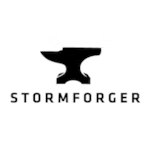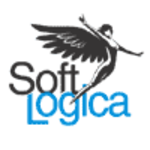Description

StormForge

Appium
Comprehensive Overview: StormForge vs Appium
StormForge and Appium are two distinct products serving different purposes and markets. Here's a comprehensive overview of each, covering their primary functions, target markets, market share, user base, and key differentiating factors:
StormForge
a) Primary Functions and Target Markets:
-
Primary Functions:
- StormForge specializes in optimizing Kubernetes applications. It uses machine learning and analytics to help organizations improve application performance, reduce cloud costs, and ensure efficient resource allocation.
- Key features include automated experimentation, predictive insights, and recommendations for resource optimization.
-
Target Markets:
- StormForge primarily targets enterprises leveraging Kubernetes for container orchestration. This includes companies using cloud-native architectures across industries like technology, finance, e-commerce, and healthcare.
- DevOps teams, cloud architects, and infrastructure engineers are the primary users.
b) Market Share and User Base:
- As of the latest data, StormForge operates in a specialized market niche focused on Kubernetes optimization. While it does not dominate a large share of the broader software optimization or cloud management markets, it holds a significant presence among enterprises using Kubernetes.
- Its user base primarily consists of mid-to-large enterprises with sophisticated IT and DevOps teams driven to maximize Kubernetes efficiency.
c) Key Differentiating Factors:
- Machine Learning Driven: StormForge uses advanced machine learning algorithms to analyze and optimize application performance automatically.
- Focus on Kubernetes: The product is specially designed for Kubernetes environments, providing deep insights tailored to this platform.
- Cost Reduction Emphasis: A significant focus of StormForge is cost reduction through resource optimization, which is critical for companies managing large-scale cloud deployments.
Appium
a) Primary Functions and Target Markets:
-
Primary Functions:
- Appium is an open-source test automation framework used for mobile and web applications. It enables developers and QA teams to write tests for Android, iOS, and Windows applications.
- Supports a variety of programming languages and test frameworks, allowing integration with existing development workflows.
-
Target Markets:
- Appium primarily targets mobile app developers, QA engineers, and software testers.
- Businesses in industries like technology, media, and e-commerce that develop or manage mobile applications are key users.
b) Market Share and User Base:
- Appium holds a significant position in the test automation market, especially for mobile applications. As an open-source tool, it enjoys widespread adoption globally.
- Its user base is vast, ranging from individual developers and small teams to large enterprises needing comprehensive testing capabilities for mobile and web applications.
c) Key Differentiating Factors:
- Cross-platform Testing: Appium's ability to test across multiple platforms (iOS, Android, Windows) without modifying the application code is a critical differentiator.
- Open Source and Flexibility: Being open-source, Appium offers flexibility and a wide community for support, allowing customization to fit specific test needs.
- Language Agnostic: Appium supports multiple programming languages, including Java, Python, Ruby, and JavaScript, making it versatile for diverse development environments.
Comparison
- Market Focus: StormForge is focused on optimization in cloud-native environments, specifically Kubernetes, while Appium is centered on mobile and web test automation.
- Technological Approach: Both leverage automation, but StormForge uses machine learning for operational efficiency, whereas Appium is about facilitating comprehensive, platform-independent test automation.
- Market Presence: Appium, as an established tool in the test automation industry, likely has a broader and more diverse user base compared to the more niche-focused StormForge.
These key aspects highlight that while both tools serve to enhance operational efficiency in their respective domains, they cater to different audiences and solve different types of challenges in the software development lifecycle.
Contact Info

Year founded :
2015
+1 617-209-3159
Not Available
United States
http://www.linkedin.com/company/stormforge

Year founded :
Not Available
+1 512-721-0293
Not Available
Sweden
http://www.linkedin.com/company/appium-project
Feature Similarity Breakdown: StormForge, Appium
Certainly! StormForge and Appium are two distinct products catering to different fields of technology. StormForge focuses on application performance optimization while Appium is a framework for automating mobile app testing. Despite their different purposes, here’s how they compare:
a) Core Features in Common:
-
Automation:
- Both StormForge and Appium have robust automation capabilities. StormForge automates the process of performance testing and optimization, while Appium automates the testing of mobile applications across different platforms.
-
Integration:
- Both systems are designed to integrate well with various tools within their respective ecosystems. StormForge integrates with Kubernetes environments and CI/CD pipelines, whereas Appium integrates with various development and continuous testing tools.
-
Open-Source Components:
- Appium is entirely open-source, whereas StormForge involves open-source components, particularly in its Kubernetes-centric environments.
-
Cross-Platform Support:
- Appium is known for its cross-platform testing capabilities for iOS and Android. While StormForge isn't focused on mobile platforms, it does offer solutions that work across different cloud environments for Kubernetes.
b) User Interfaces Comparison:
-
Appium:
- Appium generally relies on the command line and server-side configuration to operate, though many third-party GUI tools are available to enhance usability. This makes it more developer-centric, focusing on writing scripts and managing tests directly via code and scripts.
-
StormForge:
- StormForge offers a more graphical user interface designed for cloud-native operations, appealing to both developers and operations teams. The interface typically helps in creating and visualizing experiments, monitoring performance metrics, and recommending optimizations.
c) Unique Features:
-
StormForge:
- Machine Learning-driven Optimization: StormForge utilizes machine learning algorithms to analyze and optimize resource configurations automatically, which is a distinctive feature not found in Appium.
- Resource Efficiency: Focused on optimizing Kubernetes applications to balance performance with cost, providing actionable insights to reduce cloud spend, a feature tailored specifically for cloud-native infrastructures.
-
Appium:
- Cross-Device Testing: Appium enables automation across many devices and platforms without needing modifications to the apps, supporting multiple scripting languages (Java, Ruby, Python, etc.).
- Support for Real Devices and Emulators: Provides extensive support for both real devices and virtual devices (emulators/simulators), essential for comprehensive mobile testing.
- Versatility in Testing Scenarios: Can automate various types of mobile apps (native, hybrid, and mobile web applications), making it a versatile tool for QA teams.
In summary, while StormForge and Appium share some technological themes like automation and integration, they serve vastly different purposes in the technology ecosystem. StormForge is unique in its application of machine learning for optimization in Kubernetes, whereas Appium stands out in its flexibility for mobile application testing across platforms and devices.
Features

Not Available

Not Available
Best Fit Use Cases: StormForge, Appium
Certainly! Let's explore the best fit use cases for StormForge and Appium, as well as their applications across different industries and company sizes.
StormForge
a) For What Types of Businesses or Projects is StormForge the Best Choice?
StormForge is best suited for businesses or projects that involve complex, Kubernetes-based applications needing performance optimization and cost efficiency. This includes:
-
Large Enterprises and Cloud-Native Companies: Organizations operating large-scale Kubernetes deployments can benefit significantly from StormForge's ability to optimize resource usage, reducing cloud costs and improving application performance.
-
DevOps and SRE Teams: These teams within any size organization can leverage StormForge to automate the tuning of Kubernetes applications, ensuring optimal configuration without manual trial and error.
-
E-commerce Platforms: Businesses with fluctuating traffic patterns, like e-commerce, can use StormForge to ensure that applications are properly scaled and responsive during peak usage times.
-
SaaS Providers: Software-as-a-Service companies looking to manage infrastructure costs while maintaining high performance standards can utilize StormForge for continuous optimization.
d) How Does StormForge Cater to Different Industry Verticals or Company Sizes?
StormForge appeals primarily to larger enterprises or mid-sized businesses with significant Kubernetes adoption. Industries such as finance, healthcare, and technology—that require stringent performance standards and cost controls—find StormForge especially valuable. The tool is versatile across verticals that rely heavily on cloud-native applications and where optimizing resource consumption directly affects the bottom line.
Appium
b) In What Scenarios Would Appium be the Preferred Option?
Appium is ideal for scenarios revolving around mobile application testing. It serves as a preferred option in:
-
Cross-Platform Mobile Application Development: Businesses developing mobile apps for iOS and Android can use Appium to write tests against multiple platforms with the same API, eliminating the need for platform-specific tests.
-
Quality Assurance Teams: Teams focused on automated testing for mobile applications can leverage Appium for its open-source flexibility and capability to support multiple languages and testing frameworks.
-
Startups and Independent Developers: Those with constrained budgets but needing comprehensive testing coverage find Appium cost-effective compared to commercial mobile testing solutions.
-
Continuous Integration/Continuous Deployment (CI/CD) Pipelines: Organizations implementing CI/CD practices can use Appium to integrate testing suites that ensure consistent application quality.
d) How Does Appium Cater to Different Industry Verticals or Company Sizes?
Appium is particularly attractive to a wide range of industries, from small startups to large enterprises, offering mobile applications. Its flexibility and open-source nature make it a viable option for companies in industries such as technology, retail, and media, where mobile user experience is critical. Appium empowers companies of all sizes due to its ability to support various programming languages, making it accessible to diverse development teams with different technical stacks.
In summary, StormForge excels in performance optimization for Kubernetes-based systems predominantly used by larger enterprises, while Appium is a go-to solution for mobile application testing across industries that develop and maintain mobile apps. Each tool offers distinct advantages aligned with the specific needs of different industry verticals and company sizes.
Pricing

Pricing Not Available

Pricing Not Available
Metrics History
Metrics History
Comparing teamSize across companies
Conclusion & Final Verdict: StormForge vs Appium
When comparing StormForge and Appium, it's important to recognize that these products serve different purposes and cater to distinct user needs. StormForge is primarily focused on optimizing cloud-native applications through performance and resource management, while Appium is an open-source tool for automating mobile app testing. Given these differences, the decision between the two depends largely on your specific requirements and objectives.
a) Best Overall Value:
- Best Overall Value: Given that StormForge and Appium address different aspects of software development, declaring one as having better overall value is challenging without context. However, if your primary focus is on improving cloud application performance and reducing costs, StormForge offers significant value. Conversely, if you are focused on automating mobile app testing across various platforms, Appium provides extensive functionality as a cross-platform automation tool.
b) Pros and Cons:
StormForge:
-
Pros:
- Excellent for optimizing Kubernetes, delivering improved performance and cost savings.
- Utilizes AI and machine learning to provide actionable insights for resource allocation.
- Supports scaling by predicting optimal configurations for various workloads.
- Integrates well with CI/CD pipelines, enhancing operational efficiency.
-
Cons:
- Primarily focused on Kubernetes environments, which may limit applicability elsewhere.
- Involved setup and configuration can be complex, requiring skilled personnel.
Appium:
-
Pros:
- Open-source and free to use, maximizing cost-effectiveness for automation testing.
- Suitable for both Android and iOS, enabling cross-platform testing with the same API.
- Supports a variety of languages and frameworks, offering flexibility.
- Strong community support, enhancing development and troubleshooting processes.
-
Cons:
- May require additional configurations to handle all desired testing scenarios, especially for complex applications.
- Performance can be slower compared to other native automation tools due to its cross-platform nature.
- Debugging can be challenging, particularly for new users unfamiliar with the environment.
c) Recommendations:
-
For Users Focused on Cloud and Kubernetes Optimization: StormForge is the clear choice, offering specialized tools for optimizing performance and cost in cloud-native applications running on Kubernetes. It is particularly beneficial for organizations looking to maximize their cloud efficiency and should be leveraged by DevOps teams wishing to automate and enhance their CI/CD pipelines.
-
For Users Concentrating on Mobile App Testing: Appium stands out as an excellent option for teams needing to automate testing across multiple mobile platforms. It is ideal for environments where cross-platform testing is a priority and where the flexibility of an open-source framework is appreciated. Its rich community and broad language support make it accessible for development teams of varying sizes and experience levels.
-
General Recommendation: Assess your current priorities and operational needs carefully. If your main concern revolves around performance optimization in cloud-based applications, consider StormForge. If automating mobile application testing is the primary focus, Appium should be your go-to tool. In some scenarios, both tools might be beneficial, used in tandem to address different areas of the software development lifecycle.
Ultimately, the best value will depend on aligning your choice with the specific needs and strategies of your organization.
Add to compare
Add similar companies




